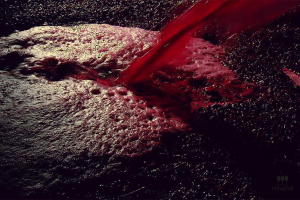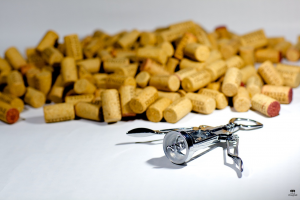ITALIAN WINES: HISTORY, CLASSIFICATION AND BEST REPRESENTATIVES OF WINE FAMILY ITALY
 What can be compared with the abundance and variety of Italian cuisine? Only Italian wine. Countless varieties, tastes and shades can excite the imagination of even experienced tasters. Young and seasoned, red and white, sweet and dry – everyone will find Italian wines to suit your taste and pocket. Today, Italian wines are the most common in the world, ahead of their main competitors – France and Spain. No one produces more wine than the Italians (every third bottle drunk in the world is their production). Here, centuries-old traditions, experience and modern technologies are successfully applied.
What can be compared with the abundance and variety of Italian cuisine? Only Italian wine. Countless varieties, tastes and shades can excite the imagination of even experienced tasters. Young and seasoned, red and white, sweet and dry – everyone will find Italian wines to suit your taste and pocket. Today, Italian wines are the most common in the world, ahead of their main competitors – France and Spain. No one produces more wine than the Italians (every third bottle drunk in the world is their production). Here, centuries-old traditions, experience and modern technologies are successfully applied.
WINE TRIUMPH OF ITALY
If other peoples of winemaking originated within states, here the whole state was formed “around the vine” – Ancient Rome. Although the Italians were not pioneers of wine, they managed to develop winemaking to an incredible scale. And from about 3000 years already, winemaking has been one of the main crafts in the country. Starting from the 16th and 17th centuries, special attention was paid to legislative regulation of the production process, but the production method remained practically unchanged, and storage in barrels was the exception rather than the case. As a result, Italian wines are often classified as “budget” wines. But in recent decades, a new course has been taken to improve technology.
Nowadays, there are about 20 wine regions that produce about 3.5 thousand types of wine. Due to the differences in the soils on which the vine grows, climatic conditions and the cultivation of different grape varieties, each of the resulting drinks has its own unique taste, aroma and character. Along with the change in technology, the culture of wine consumption in Italy itself has changed: in a quantitative comparison, there has been a sharp decline, but now preferences are given to higher-quality representatives of Italian wines.
In our materials we have already told in more detail about the history of Italian winemaking.
CLASSIFICATION OF ITALIAN WINE:
Italian wine classification
Table wines – a drink whose manufacture is not regulated by law (there are no clear definitions of the composition).
Local division occurs in relation to the area of production. Quality and type are not subject to verification.
By origin. The first category, which was approved by law. Adding sugar in the production of this drink is prohibited. Quality and authenticity is checked by the tasting commission.
By origin with warranty. The highest category. Bottles of wine of this type are easily recognizable by the red mark, indicating the number and name of the wine.
VARIETIES OF ITALIAN WINE
Italian wines have their business card – wine kyanti. Its popularity goes far beyond the borders of the motherland. There are several methods of manufacturing kyanti. The oldest or “governo al Toscano”: the already prepared wine is mixed with wort from dried grapes. Due to re-fermentation, a unique taste and floral aroma is acquired. This technique gradually goes down in history, and increasingly use the extract in oak barrels.
The best varieties of Italian wines
The pride of Verona is Valpolicella. Mild climatic conditions gave a mild taste and light aroma of red wine. The color of the drink varies depending on the duration of exposure from saturated ruby at the beginning of its path, to ruby - after several years of storage.
Tart, spicy and young – Barbaresco. Nebillo red dry wine.
Bardolino is a red (rose) wine that has been known since ancient times. The drink is produced in the Veneto region. Every year of storage, it receives a rich cherry color, and its taste becomes drier and more harmonious.
Italian wines from the vineyard Tomassi
Fragrant white grapes Prosecco presented amazing sparkling Italian wine. Minimal heat treatment is used during its production: soft pressing and several months of proper fermentation. The result is a surprisingly soft Prosecco wine.
BEST ITALIAN WINE
The number of fans of Italian winemaking in Kazakhstan is increasing annually. We present to your attention the most popular Italian wines in Kazakhstan:
Italian wine Tomassi Amarone Della Valpolicella Classico DOC
Special wine for special occasions – Tomassi Amarone Della Valpolicella Classico DOC. Exquisite taste, rich aroma and deep color.
Italian wine Tomassi Appassimento Adorato
Light wine Tomassi Appassimento Adorato with a pleasant fruity-honey flavor.
Italian wine Tomassi Valpolicella Classico Superiore DOC
Tomassi Valpolicella Classico Superiore DOC – balanced taste with a bouquet of black pepper and ripe cherry.
Italian wine Banfi Centine
Dry Banfi Centine has a long finish and a rich ruby color.
Italian wine Banfi Centine Blanco Toscana IGT
Banfi Centine Blanco Toscana IGT is a rich, bright and memorable wine. In his bouquet heard notes of ripe fruit, vanilla and tobacco.




